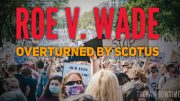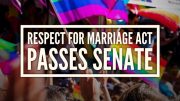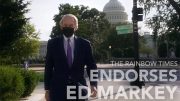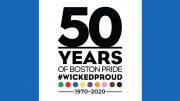 The avid reader’s guide to who and what to watch for at the Supreme Court on marriage argument days. What to expect March 26 and 27 when the U.S. Supreme Court takes up the marriage equality cases.
The avid reader’s guide to who and what to watch for at the Supreme Court on marriage argument days. What to expect March 26 and 27 when the U.S. Supreme Court takes up the marriage equality cases.
By: Lisa Keen/Keen News Service–
Two of the LGBT civil rights movement’s most important cases come before the U.S. Supreme Court on March 26 and 27 and, regardless of the outcome, they will almost certainly be the most watched oral arguments ever on an LGBT issue.
A “United for Marriage” coalition of national and local LGBT groups have planned a number of events and rallies for the steps of the Supreme Court building and have organized buses from several cities to bring in participants. The rallies are likely to enjoy a great deal of visibility on national television screens that Tuesday and Wednesday, as the high court does not provide for any live camera or web broadcast of the arguments themselves.
There are only 400 seats in the courtroom, according to the public information office: 240 are for the public, 36 for journalists, and the rest (124) for guests of the justices and members of the Supreme Court bar. The court also provides a few more seats for journalists in an adjacent “hallway” with obstructed views of the courtroom, and it has 30 seats in the public section where visitors can watch for three to five minutes each before being rotated out.
Readers who are eager to absorb the arguments themselves but are unable to snare a courtside seat have two options: an audio recording and a transcript – both available at www.supremecourt.gov. (Click on “Oral argument” and choose either “Argument transcript” or “Argument recording.”) The public information office says both will be available by 1 p.m. EDT on Tuesday and 2 p.m. EDT on Wednesday.
Some of the players are already well known to readers, some are not. Certainly, the key issues in the case have occupied a central focus for the LGBT community for many years now and the resolution of both cases are of enormous consequence to LGBT people throughout the country.
To help readers prep for the argument and the expected crush of media reporting on the cases, the following is a quick guide to the issues, the attorneys, and what to listen for:
Tuesday, March 26 at 10 a.m. EDT: Proposition 8:
Case name: Hollingsworth v. Perry (Case No. 12-144)
Issue in play: Whether the voters of California have a right to amend their state constitution to prevent same-sex couples from obtaining marriage licenses the same as male-female couples. A decision, if rendered, could potentially affect other states with such bans.
Question posed by the court: Whether Proposition 8 violates the equal protection clause of the Fourteenth Amendment. (The Fourteenth Amendment prohibits states from depriving any person of “the equal protection of the laws.”)
Additional question posed, on standing: Whether the Yes on 8 coalition that campaigned for passage of Proposition 8 has legal standing to appeal the lower court decision, given that California elected officials chose not to appeal.
Plaintiffs in the original lawsuit: Two California couples who seek the right to marry: Kristin Perry and Sandra Stier of Berkeley and Paul Katami and Jeff Zarrillo of Burbank.
Petitioner bringing appeal: Dennis Hollingsworth is a former state senator from California who helped lead protectmarriage.com, a coalition of groups that established the Yes on 8 campaign. He and other officials brought the appeal after losing in the Ninth Circuit U.S. Court of Appeals.
Attorneys arguing merits and standing:
For Yes on 8 and for Proposition 8: Charles Cooper
For same-sex couples and against Proposition 8: Ted Olson
For the U.S. and against Proposition 8: Solicitor General Donald Verrilli
History behind the case: This dispute began more than 13 years ago, when voters first approved Proposition 22 to limit marriage to heterosexual couples only. That vote was challenged in state court and, the California Supreme Court ruled in 2008 that such a restriction violated the state constitution’s guarantee of equal protection. Opponents of allowing gays to marry came up with another initiative, Proposition 8, to amend the state constitution. Proposition 8 passed that same year, but supporters of same-sex couples, via the newly minted American Foundation for Equal Rights, filed suit in 2009 in federal court, saying the ban violated the equal protection rights of gays under the federal constitution.
The litigation made a major media splash at the time because AFER’s lead attorneys were former George W. Bush Solicitor General Ted Olson and renown liberal litigator David Boies. In the 2000 election, Olson and Boies had been opposing attorneys in the Supreme Court case deciding who won the 2000 presidential election. The AFER lawsuit also garnered considerable attention because much of the LGBT legal infrastructure was against it. But during a three-week trial in San Francisco federal court, the community came onboard and plaintiffs won. U.S. District Court Chief Judge Vaughn Walker (who came out as gay after retirement) issued a decision in August 2010, saying Proposition 8 violated the federal equal protection clause because there was no rational basis for limiting the designation of marriage to straight couples. He also said it violated the federal due process clause because there was no compelling reason for the state to deny same-sex couples the fundamental right to marry.
State officials in California chose not to appeal the decision, but the Yes on 8 coalition was allowed to do so (creating the question of legal standing). In February 2012, a three-judge panel of the Ninth Circuit U.S. Court of Appeals upheld Walker’s decision but on much more narrow grounds –it said the U.S. Supreme Court’s 1996 ruling in Romer v. Evans precluded voters from withdrawing the right to marry from same-sex couples in California. But the Supreme Court is asking for arguments on the broader question of whether Proposition 8 violates the constitutional right to equal protection.
Wednesday, March 27, 10 a.m. EDT: Defense of Marriage Act
Case name: U.S. v. Windsor (Case No. 12-307)
Issue in play: Whether the federal government can deny to citizens who are legally married to a same-sex partner the same benefits it provides citizens who are legally married to an opposite sex partner. A General Accounting Office study in 2004 found that DOMA affects 1,138 federal statutory provisions of the United States Code in which marital status is a factor in determining or receiving benefits, rights, and privileges.
Question posed by the court: Whether Section 3 of DOMA violates the equal protection clause of the Fourteenth Amendment. The Fourteenth Amendment prohibits states from depriving any person of “the equal protection of the laws.”
Additional question posed, on standing: The Supreme Court has posed two questions: Whether the executive branch’s agreement with the Second Circuit decision in Windsor v. U.S. (that DOMA is unconstitutional) precludes the Supreme Court from ruling in the case, and whether the House Bipartisan Legal Advisory Group (BLAG) has standing to defend DOMA in court.
Plaintiff in the original lawsuit: Edith Windsor is the surviving spouse of Thea Spyer. The couple had been together for 40 years and married in Canada in 2007. Spyer died in 2009, before New York State allowed marriage licenses for same-sex couples. The U.S. Internal Revenue Service would not allow Windsor to take the routine marital estate tax deduction and, instead, demanded she pay more than $360,000 in taxes on the estate she shared with her spouse.
Petitioner bringing appeal: The U.S. brings the appeal to defend the administration’s obligation to enforce DOMA. But the real defender of DOMA in this case is a legal team hired by the Republican-led House legal office (aka BLAG).
Attorneys arguing standing:
At the invitation of the court, against standing: Vicki C. Jackson
For the U.S. and against standing: Deputy Solicitor General Sri Srinivasan
For BLAG and for standing: Paul Clement
Attorneys arguing merits:
For BLAG and for DOMA: Paul Clement
For the U.S. and against DOMA: Solicitor General Donald Verrilli
For plaintiff Windsor and against DOMA: Roberta Kaplan
History behind the case:
The Windsor lawsuit is one of seven challenges with appeals pending before the Supreme Court against DOMA, the law approved by Congress in 1996 to head off what was then a burgeoning movement toward achieving equal rights to marriage. The law has two sections: Section 2 says that no state “shall be required” to recognize a marriage license to a same-sex couple granted by another state. Section 3 says that the federal government can give recognition to marriage licenses of male-female couples only. Section 3 is the only part of DOMA under contention in the lawsuits.
In December, the Supreme Court agreed to hear U.S. v. Windsor. The Windsor case was originally filed by the ACLU with the help of Windsor’s attorney, Roberta Kaplan at the law firm of Paul, Weiss, Rifkind, Wharton & Garrison in New York, and Pamela Karlan, co-director of the Supreme Court Litigation Clinic at Stanford Law School. Karlan, who is openly gay, has been mentioned as a potential candidate for a Supreme Court nomination.
The Second Circuit of the U.S. Court of Appeals, the first federal appeals court to examine DOMA under heightened scrutiny, ruled last October that DOMA violates the equal protection clause of the constitution.
Defending DOMA is former George W. Bush Solicitor General Paul Clement, an attorney hired by the Republican-led Bipartisan Legal Advisory Group (BLAG). House Speaker John Boehner called for Clement’s help after directing BLAG’s General Counsel to begin defending DOMA in court after the Obama administration announced it believes the law to be unconstitutional. The Obama administration is obliged to enforce the law (hence the IRS demand that Windsor pay the taxes), but it has refused since February 2011 to defend the law as constitutional.
What to listen for in the arguments: In both cases, Justice Anthony Kennedy’s comments and questions will be watched with a great deal of interest. Kennedy wrote the opinion in Romer and in the 2003 Lawrence v. Texas decision striking down sodomy laws. Both sides consider him the key vote to sway in order to consolidate a five-vote majority.
The critical points in Kennedy’s decision in Romer were that Colorado Amendment 2, prohibiting laws that banned discrimination based on sexual orientation, had “the peculiar property of imposing a broad and undifferentiated disability on a single named group,” that “its sheer breadth is so discontinuous with the reasons offered for it that the amendment seems inexplicable by anything but animus,” and that “it is a classification of persons undertaken for its own sake, something the Equal Protection Clause does not permit.”
But Kennedy has been listing toward the conservative wing of the court recently, leading its dissent against President Obama’s Affordable Care Act and leading its majority ruling to allow corporations to contribute without limits to political campaign activities. And in a speech in Sacramento March 6, he told reporters he thinks it is a “serious problem” that the Supreme Court is being asked to settle controversial issues facing a democracy.
What to watch for on television: Because the court does not allow cameras in the courtroom, rallies outside the Supreme Court will almost certainly get considerable air time.
A “United for Marriage” coalition of national and local LGBT groups has planned events outside the Supreme Court building beginning Monday, March 25, with a “Youth Lights for Equality” candlelight vigil in front of the Supreme Court from 6:30 to 8 p.m. On Tuesday morning, at 7:15 a.m., there will be an interfaith “Prayer for Love & Justice” service, followed by a procession at 8:30 a.m. to the Supreme Court building. At 8:30 a.m. Tuesday, there will be a “United for Marriage Rally” on the steps of the Supreme Court. And on Tuesday evening, at 5:30, a “Parting of the Waters” seder.
The “United for Marriage Rally” will return at 8:30 a.m. on Wednesday on the front steps of the Supreme Court.
After the argument is over each day –shortly after 11 a.m. on Tuesday and after 11:50 a.m. on Wednesday, EDT– attorneys from both sides of the argument that day typically convene impromptu press conferences on the front steps of the Supreme Court. They express optimism about the outcome, compliment the justices for asking “good questions,” and explain the importance of the cases in short sound bites. One thing they don’t typically do is predict the outcome.
© Copyright 2013 by Keen News Service. All rights reserved.







